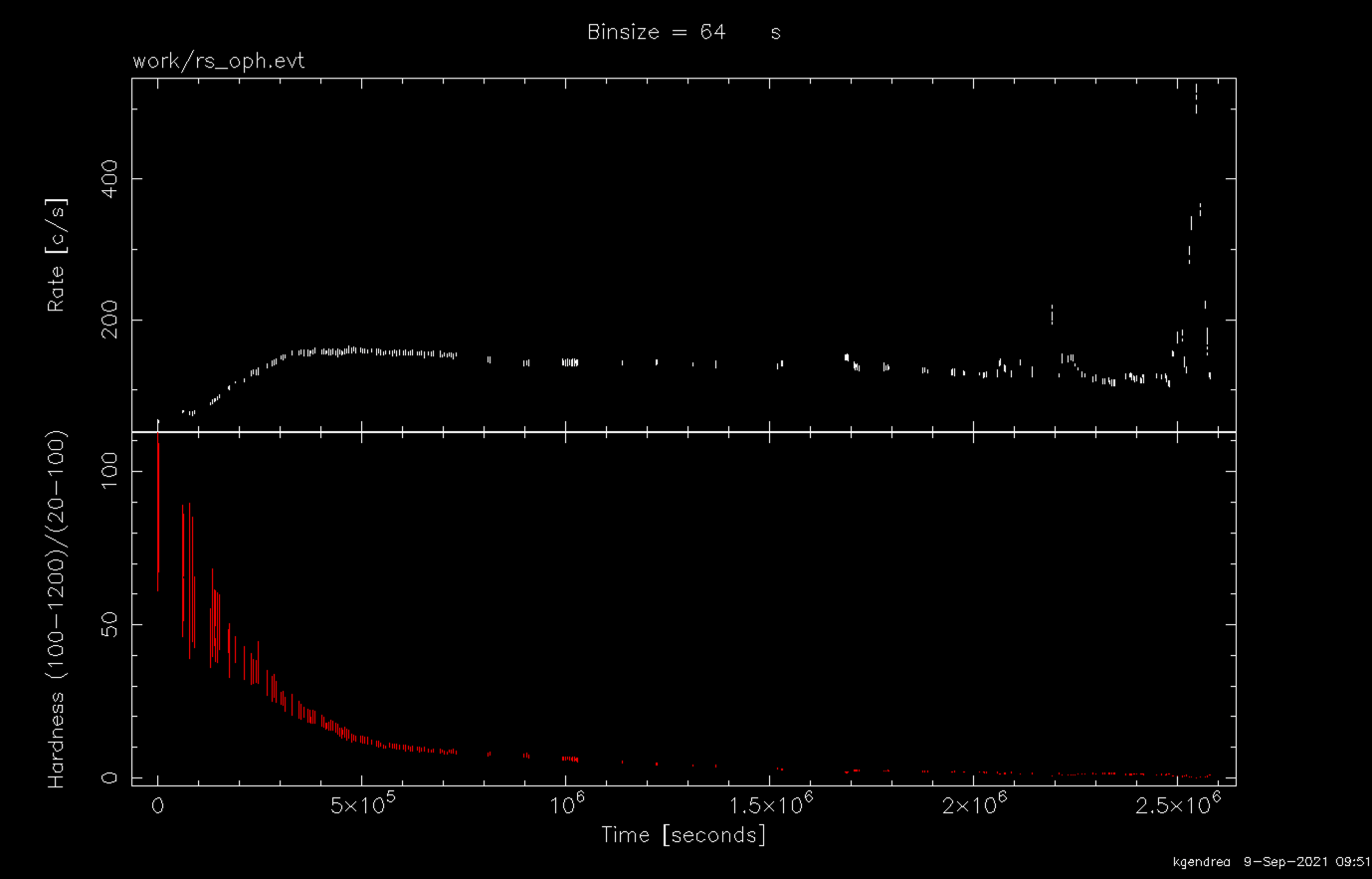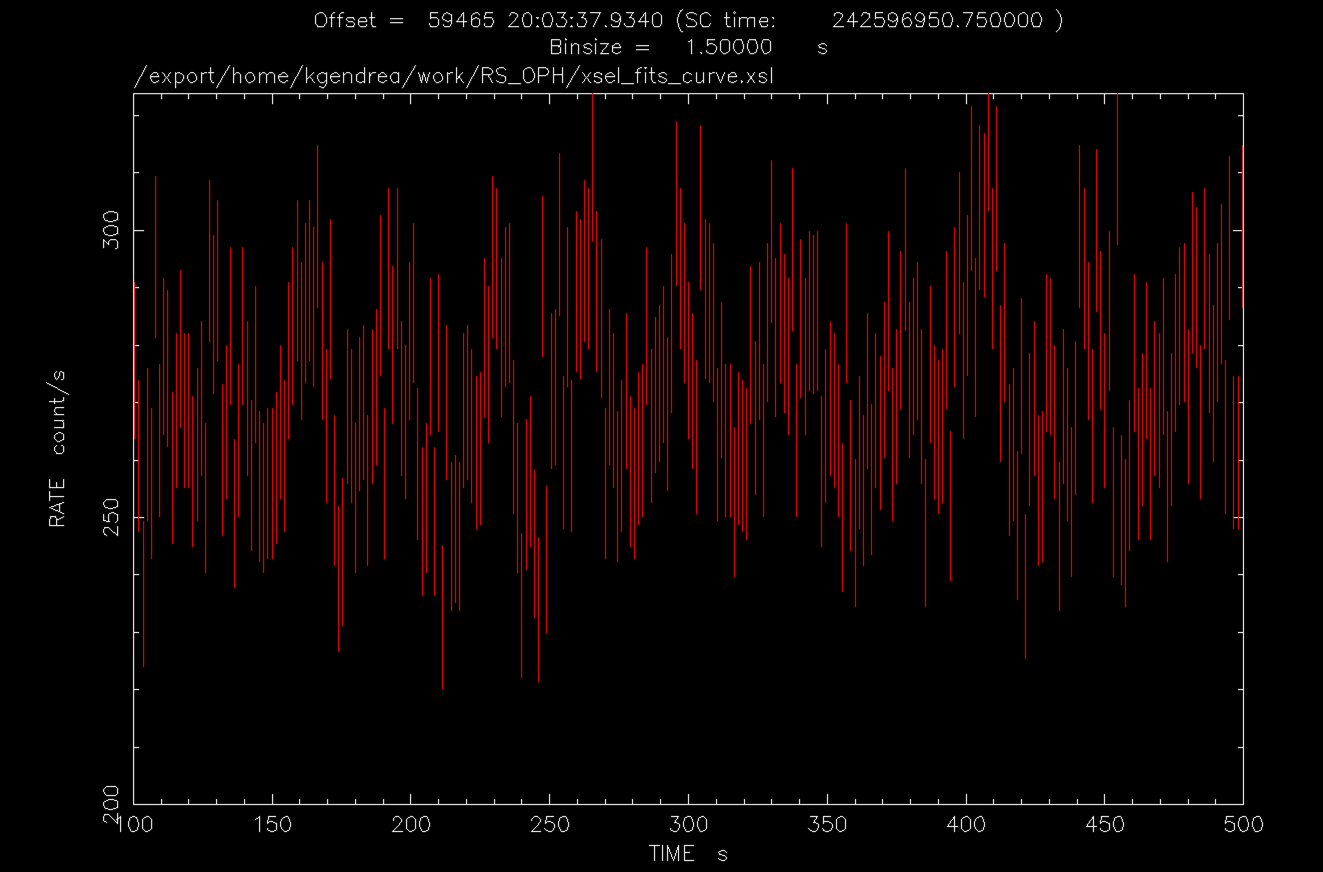NICER / ISS Science Nugget
for September 9, 2021
The Continuing Case of RS Oph
NICER continues to monitor the spectral evolution of RS Ophiuchi (RS Oph) which began an outburst on August 8th. As reported in recent weeks, RS Oph consists of a white-dwarf star accreting matter from a companion red-giant star; approximately once every 15 years, the accreted material reaches critical density and explodes in a thermonuclear fusion reaction on the white-dwarf's surface.
Until a few days ago, X-ray emission from the explosion's debris cloud has dominated the flux seen by NICER. Over the past week, this debris cloud has cleared enough so that the surface of the white-dwarf star is directly visible. The resulting overall NICER count rate of RS Oph has increased dramatically, while the spectral hardness of the source has diminished tremendously (left figure). The spectrum of the source is dominated by emission below photon energies of 600 eV, compared to what was seen earlier (middle figure). Restricting the energy passband to this spectral region of enhanced brightness has brought into view the pulsations from the white-dwarf star itself (right figure). These pulsations are due to the glowing hot spot on the star surface where the original explosion occurred, which is swept into and out of our field of view roughly every 34-35 seconds, the spin period of the white-dwarf star.
These preliminary results were published this week in Astronomer's Telegram #14901.



Figure: Left Top: measured NICER count rate of RS Oph since August 10th, 2021. Left Bottom: the spectral hardness of RS Oph over the same period.
Middle: A comparison of the RS Oph spectrum during one of the most recent bright intervals compared to an off-peak interval.
Right: The light curve of RS Oph in the 200-600 eV band during the most recent peak intensity shows the pulsations of emission as the white-dwarf star spins once around every 34-35 seconds.
<< Previous
Main Index
Next >>